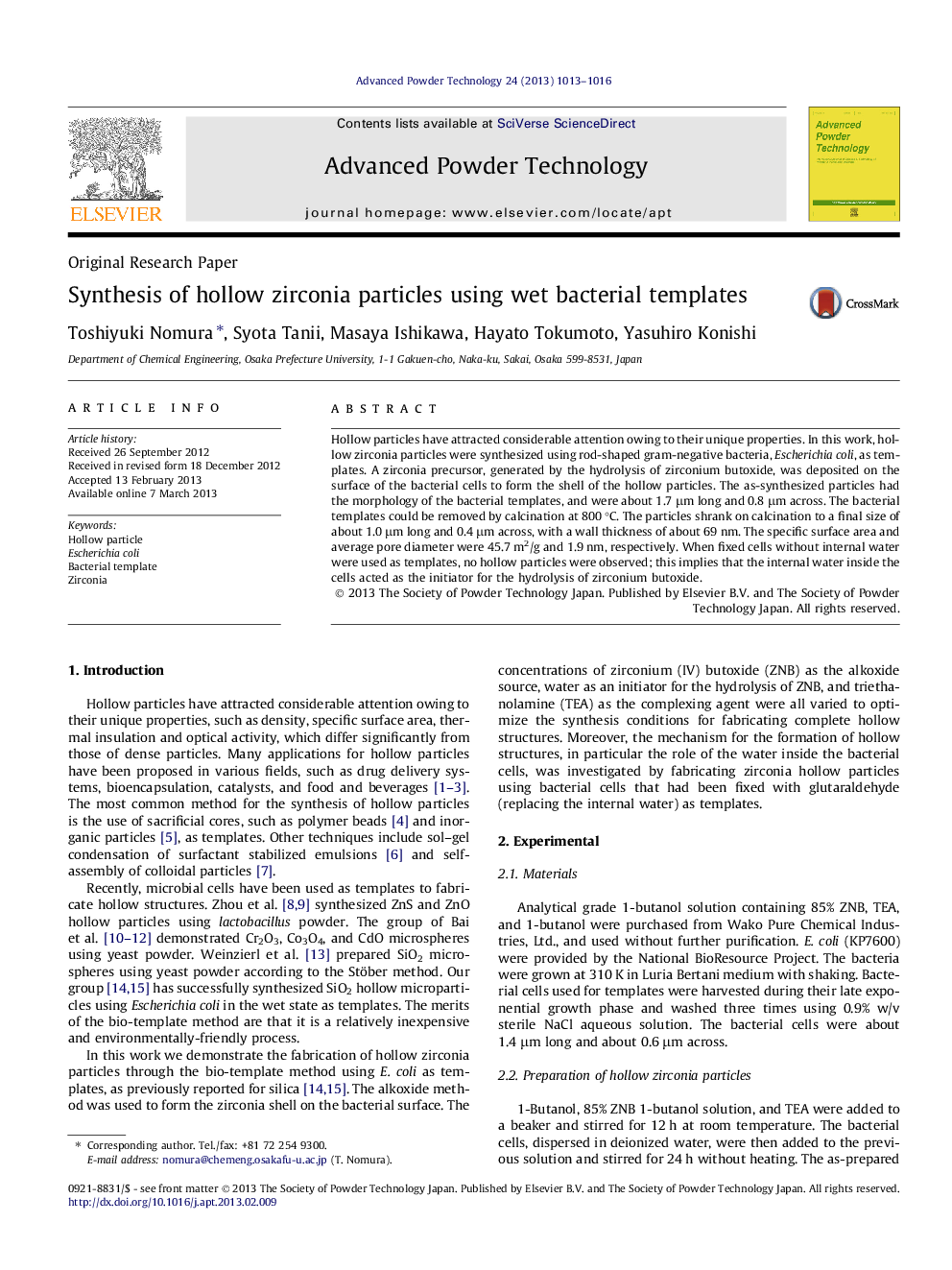| Article ID | Journal | Published Year | Pages | File Type |
|---|---|---|---|---|
| 144211 | Advanced Powder Technology | 2013 | 4 Pages |
Hollow particles have attracted considerable attention owing to their unique properties. In this work, hollow zirconia particles were synthesized using rod-shaped gram-negative bacteria, Escherichia coli, as templates. A zirconia precursor, generated by the hydrolysis of zirconium butoxide, was deposited on the surface of the bacterial cells to form the shell of the hollow particles. The as-synthesized particles had the morphology of the bacterial templates, and were about 1.7 μm long and 0.8 μm across. The bacterial templates could be removed by calcination at 800 °C. The particles shrank on calcination to a final size of about 1.0 μm long and 0.4 μm across, with a wall thickness of about 69 nm. The specific surface area and average pore diameter were 45.7 m2/g and 1.9 nm, respectively. When fixed cells without internal water were used as templates, no hollow particles were observed; this implies that the internal water inside the cells acted as the initiator for the hydrolysis of zirconium butoxide.
Graphical abstractSEM images of (a) templates, (b) as-synthesized particles, (c) calcined particles and (d) crushed calcined particles.Figure optionsDownload full-size imageDownload as PowerPoint slideHighlights► Hollow zirconia particles were successfully synthesized using bacterial templates. ► The particles were 1.0 μm long, and 0.4 μm wide, with walls 69 nm thick. ► The internal water inside the cells initiates hydrolysis of zirconium butoxide.
